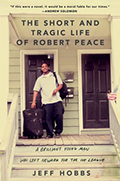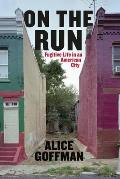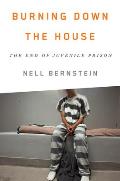
Like many Americans I walk an uneasy line between being appalled by the living conditions of the inner-city and being afraid of them. The educational and socio-economic disadvantages common in inner-city neighborhoods, along with the high rates of drug- and gang-related violent crime, are already hard problems to grasp and tackle. The fact that these problems are primarily faced by minority communities makes it even harder to engage in productive dialogue, particularly one free of the PC sensitivity that tiptoes across issues when a raucous stomp might be more effective.
We've seen some stomping this summer. Not all of it has been easy to understand: the riots and looting following the shooting death of Michael Brown in Ferguson, Missouri, made manifest the community's anger, but it also obscured the crime and troubled the distinction between innocent community and guilty police force. The majority of protestors, however, have been vocal and peaceful, forcing Ferguson and communities across the country to think hard about police militarization, diversity in law enforcement, and the fact that in many American towns and cities, young black people have to be afraid of the police and civilians with guns.
In a New York Times op-ed article earlier this week, "What Makes People Poor?," Thomas B. Edsall discusses the liberal tendency to shy away from negative depictions of inner-city minorities and the conservative habit of attributing poverty and violence to character flaws instead of societal conditions. Edsall argues that both attitudes have obstructed honest debate and lauds the work of sociologist William Julius Wilson, one of the first scholars to assert that the character flaws associated with the inner-city — lack of initiative, broken families, welfare dependence, crime, and violence — are the result of staggering class and racial inequality. His work, Edsall suggests, has opened the door for a host of talented young journalists and academics to write about the realities of inner-city life without the blunting influences of political correctness or prejudice.
 One such writer, the novelist Jeff Hobbs, has produced one of 2014's finest books, The Short and Tragic Life of Robert Peace. Here Hobbs gives us the life story of his college roommate, a brilliant scientist from the Newark, New Jersey, ghetto who excelled at Yale only to die in a drug-related murder after graduation. This could be a Hallmark movie tear-jerker of a book, but Hobbs is far too talented and self-aware for that. The Short and Tragic Life makes no bones about the violence and deprivation that marked Robert Peace's childhood, but it also doesn't absolve him of the anger, pride, conceit, or cultural conditioning that led him to engage in criminal activities despite all of the sacrifices that family, friends, and even strangers made so that he could succeed. Hobbs is particularly good at illuminating the tensions between the white and privileged (including himself) and the poor minority students at Yale, who reach what they've been told is the top only to discover that real success requires the additional capital and family support needed to go to law and medical school or into elite but nonlucrative careers like teaching and research — money they don't have, support they may not have, dream careers that seem a lot less pragmatic than the service and other professions of their high school friends and family members. The Short and Tragic Life of Robert Peace is a harrowing elegy, but it is also an eye-opening examination of inner-city boyhood and the troubling, much too simplistic way we equate success with escape.
One such writer, the novelist Jeff Hobbs, has produced one of 2014's finest books, The Short and Tragic Life of Robert Peace. Here Hobbs gives us the life story of his college roommate, a brilliant scientist from the Newark, New Jersey, ghetto who excelled at Yale only to die in a drug-related murder after graduation. This could be a Hallmark movie tear-jerker of a book, but Hobbs is far too talented and self-aware for that. The Short and Tragic Life makes no bones about the violence and deprivation that marked Robert Peace's childhood, but it also doesn't absolve him of the anger, pride, conceit, or cultural conditioning that led him to engage in criminal activities despite all of the sacrifices that family, friends, and even strangers made so that he could succeed. Hobbs is particularly good at illuminating the tensions between the white and privileged (including himself) and the poor minority students at Yale, who reach what they've been told is the top only to discover that real success requires the additional capital and family support needed to go to law and medical school or into elite but nonlucrative careers like teaching and research — money they don't have, support they may not have, dream careers that seem a lot less pragmatic than the service and other professions of their high school friends and family members. The Short and Tragic Life of Robert Peace is a harrowing elegy, but it is also an eye-opening examination of inner-city boyhood and the troubling, much too simplistic way we equate success with escape.
Another phenomenal young writer is sociology professor Alice Goffman, whose On the Run: Fugitive Life in an American City documents the years she spent embedded in one of Philadelphia's worst neighborhoods, befriending and observing a group of young black men. Goffman's argument is that the War on Drugs, while ineffective at curbing the illegal drug trade, has allowed a de facto surveillance state to develop in inner-city neighborhoods. In these communities, Goffman suggests, everyone is a suspect and most black youth are considered criminal by association — through older siblings in gangs, through friends or parents with criminal records, or just for living on a specific street. The constant surveillance and high arrest rates (she tells the story of an 11-year-old arrested for being a passenger in a stolen car) erode community ties and fuel distrust of law enforcement. Her argument is compelling, but what makes Goffman's book exemplary are her personal anecdotes and the life stories of her friends/subjects. On the Run forces the reader to see statistics as human beings, and the experience is both disconcerting and illuminating.
 As both The Short and Tragic Life of Robert Peace and On the Run make clear, incarceration is a common experience among inner-city residents. Many of Robert Peace's childhood friends and Goffman's subjects had family members in jail, or spent time there themselves. Nell Bernstein's latest book, Burning Down the House, looks specifically at juvenile incarceration, arguing that the juvenile prison industry makes a profit while abusing children — often poor minorities — and drastically lowers their chances of receiving an education and landing a decent job. Like Goffman's subjects, a lot of these kids are locked up for minor infractions like parole violation or truancy; as in On the Run, a perverse domino effect ensues in which one violation leads to increased surveillance, which leads to evading law enforcement, which leads to warrants, convictions, jail time, and a lifetime overshadowed by a felony record. It's clear that Bernstein is furious, but after reading her interviews with prisoners and meticulous deconstruction of the prison industry, it's impossible not to share her frustration. Like Hobbs and Goffman, Bernstein doesn't hide the fact that her subjects break the law or can be scary or unpleasant. Her point is that the American justice system and prison industry take kids who are already suffering from societal ills and ensure that when they get out, nothing will change.
As both The Short and Tragic Life of Robert Peace and On the Run make clear, incarceration is a common experience among inner-city residents. Many of Robert Peace's childhood friends and Goffman's subjects had family members in jail, or spent time there themselves. Nell Bernstein's latest book, Burning Down the House, looks specifically at juvenile incarceration, arguing that the juvenile prison industry makes a profit while abusing children — often poor minorities — and drastically lowers their chances of receiving an education and landing a decent job. Like Goffman's subjects, a lot of these kids are locked up for minor infractions like parole violation or truancy; as in On the Run, a perverse domino effect ensues in which one violation leads to increased surveillance, which leads to evading law enforcement, which leads to warrants, convictions, jail time, and a lifetime overshadowed by a felony record. It's clear that Bernstein is furious, but after reading her interviews with prisoners and meticulous deconstruction of the prison industry, it's impossible not to share her frustration. Like Hobbs and Goffman, Bernstein doesn't hide the fact that her subjects break the law or can be scary or unpleasant. Her point is that the American justice system and prison industry take kids who are already suffering from societal ills and ensure that when they get out, nothing will change.
Two other books of note are Laurence Ralph's forthcoming Renegade Dreams: Living through Injury in Gangland Chicago and Gary Haugen's and Victor Boutros's The Locust Effect: Why the End of Poverty Requires the End of Violence. Haugen and Boutros take a global yet detailed look at the violence endemic in impoverished countries and communities, and optimistically lay out a plan for justice reform. In Renegade Dreams, Ralph explores the paradoxical ways in which inner-city neighborhoods — in this case in Chicago — are both warzones and community spaces capable of fostering trust and resilience. While The Locust Effect is a fantastic choice for readers interested in statistics and policy and Renegade Dreams is an almost literary ethnography, both are notable for sharing the empathy, clarity, self-awareness, and grace of Hobbs's, Goffman's, and Bernstein's writing.
When I think about the Michael Brown shooting, and before that the Trayvon Martin and Jordan Davis shootings, and the myriad shootings that have occurred this summer, I worry that our intense focus on the final story — young man or woman dead in the street — turns these kids into conclusions when they were also introductions and plot twists, context and epilogues. What I appreciate most about the beautifully written books above is that the people and places they contain are entire stories. Raucous stomping, indeed.